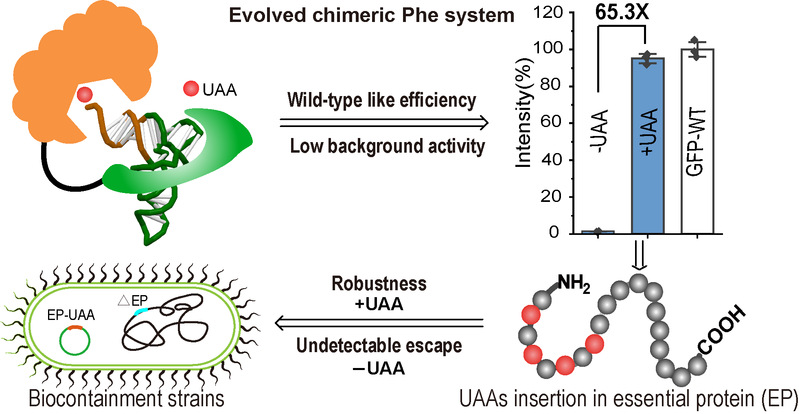On December 2, 2021, the Shixian Lin’s Lab at Life Sciences Institute, Zhejiang University, published a research article in Nature Communications entitled “Directed-evolution of translation system for efficient unnatural amino acids incorporation and generalizable synthetic auxotroph construction”.
Site-specific incorporation of unnatural amino acids (UAAs) with similar incorporation efficiency to that of natural amino acids (NAAs) and low background activity is extremely valuable for efficient synthesis of proteins with diverse new chemical functions and design of various synthetic auxotrophs. However, such efficient translation systems remain largely unknown in the literature. Here, we describe engineered chimeric phenylalanine systems that dramatically increase the yield of proteins bearing UAAs, through systematic engineering of the aminoacyl-tRNA synthetase and its respective cognate tRNA. These engineered synthetase/tRNA pairs allow single-site and multi-site incorporation of UAAs with efficiencies similar to those of NAAs and high fidelity. In addition, using the evolved chimeric phenylalanine system, we construct a series of E. coli strains whose growth is strictly dependent on exogenously supplied of UAAs. We further show that synthetic auxotrophic cells can grow robustly in living mice when UAAs are supplemented.

Figure 1. Efficient unnatural amino acids incorporation and generalizable synthetic auxotroph construction with the evolved chimeric Phe system.
Dr. Hongxia Zhao and Dr. Wenlong Ding are co-first authors in this study. Dr. Shixian Lin is the corresponding author. This research was supported by the National Key R&D Program of China (Grant 2019YFA09006600), the National Natural Science Foundation of China (Grant 91953113, 21877096), the Fundamental Research Funds for the Zhejiang Provincial Universities (Grant 2019XZZX003-19), and China Postdoctoral Science Foundation (2019M652072 for W. D.).
Link:https://www.nature.com/articles/s41467-021-27399-x.pdf



